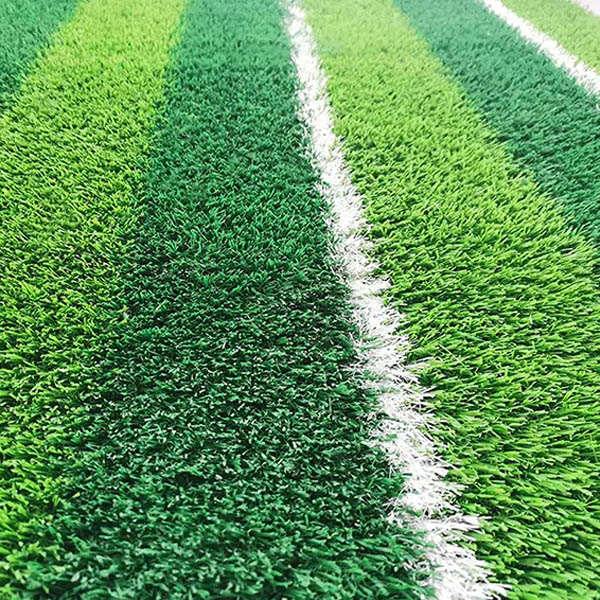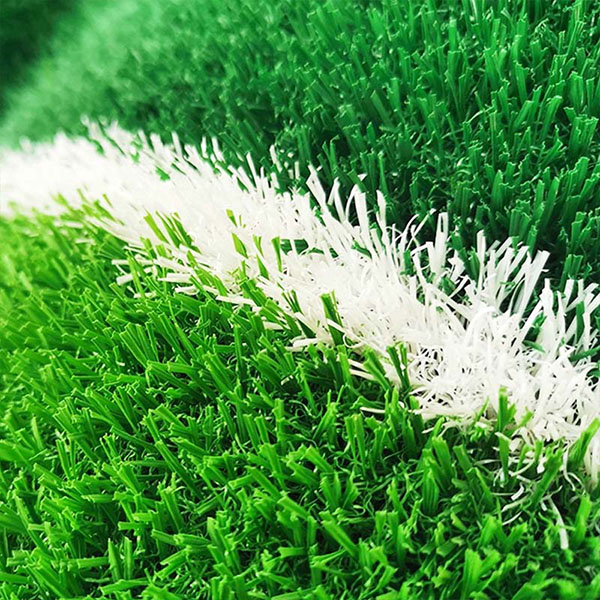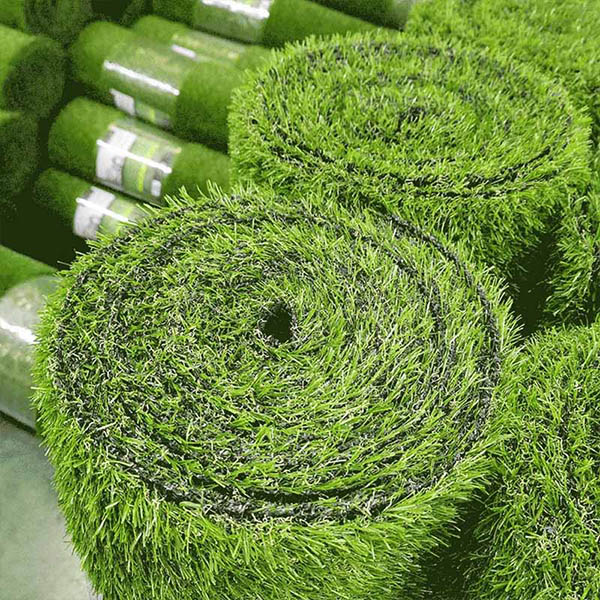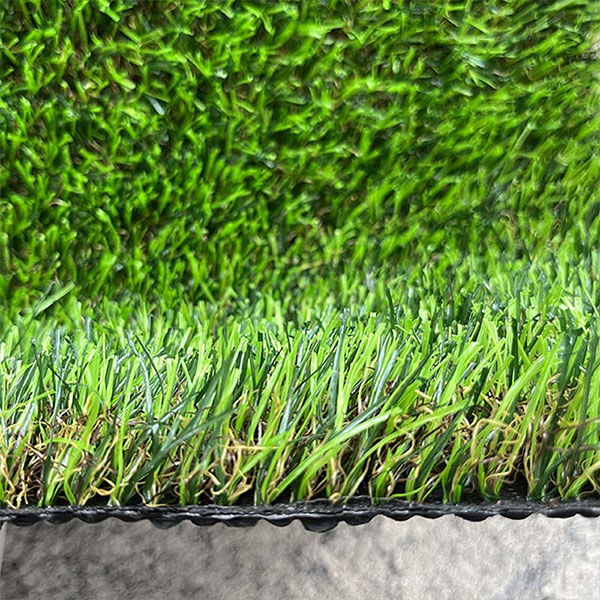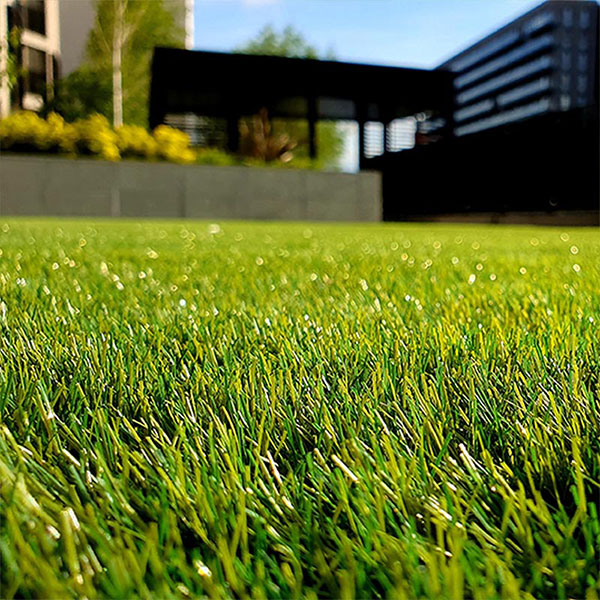Artificial turf grass is becoming more and more popular among homeowners. The beauties of artificial turf include lower water bills, better drainage, minimal maintenance, stunning views in both sunny and shady areas, and protecting your family and pets from pesticides, fertilizers, and chemicals. Today, artificial synthetic grass looks more realistic than ever, but improper installation can make it look fake and unnatural. Professional artificial grass installers have the experience, skills and special tools to make artificial lawn grass look realistic.
How much does artificial lawn cost? The cost of artificial turf ranges from $2,961 to $7,792, with a national average of $5,358 for materials and installation. The total cost of artificial grass depends on how much turf grass is needed and the type of fake grass. Artificial grass can last 20 years or more if properly installed. It is suitable for children and pets, and the high-quality artificial turf is resistant to deformation and stretching, and competes with natural grass in hot conditions. Today’s artificial grass is made up of a range of shades of green, giving the lawn a more natural look. Some types of artificial grass even have a layer of straw to make them look more realistic.
With prices ranging from $2 to $8 per square foot, artificial grass installation costs more than turf installation, which ranges from $0.90 to $2 per square foot. Despite the high initial cost of artificial grass, homeowners can save time, effort, and money on the water, fertilizer, chemicals, and pesticides that traditional lawns require. Labor costs for a professional landscaper to install artificial turf typically range from $3 to $12 per square foot, depending on the complexity of the job and the size of your yard. This guide will cover the additional costs and considerations that affect the cost of artificial turf, the different types of artificial grass, the benefits of installing artificial grass, and the important questions homeowners ask artificial grass installation companies.
High density Artificial Grass Carpet Lawn Landscape
How much does artificial grass cost? It depends on several factors. Prices may vary from national averages due to lot size and shape, turf material, turf brand, labor cost, installation location, blade shape, substrate, weed control, irrigation, site preparation, cleaning, and geography.
Synthetic grass can cost anywhere from $2 to $8 per square foot, depending on the type and brand. Some stores sell artificial turf grass in rolls or linear feet, and some locations may have custom sized lawns. Artificial grass rolls are typically 7 to 15 feet wide. Larger areas will require more material, which will increase the overall cost of the project.
Cutting artificial grass for oddly shaped areas adds to the overall cost. Curved designs or bevelling non-square or rectangular areas can add $1 to $3 or more in labor costs.
Artificial grass is made from nylon, polypropylene or polyethylene. The cost of artificial turf depends in part on the materials chosen. Each material has unique properties and qualities that are better suited to a specific location or need. For example, nylon is a more durable material, while polypropylene has a more attractive and natural look. More details about each type of lawn material will be discussed below.
The best artificial grass allows homeowners, their families and their friends to enjoy their backyard without worrying about lawn care and maintenance. When choosing artificial turf, homeowners can choose from varying quality and price levels.
Lawn laying labor costs range from $3 to $9 per square foot, depending on the type of artificial turf, the size of the area, and the amount of preparation required. Homeowners should be aware that labor costs in densely populated urban areas are often higher than in rural areas.
Before installing natural artificial grass, you need to prepare the site. This included removing stones and stumps, excavating and restoring the area. If the place is difficult to access or the space needs to be thoroughly cleaned, this can lead to an increase in labor costs. Sometimes homeowners choose to install artificial grass in unusual locations such as stairs, rooftops, decks, patios, concrete surfaces, walls, indoors, or in playgrounds for children or pets. These places affect the cost of artificial grass because they require special adhesives and additional treatments to prevent mold and mildew growth.
Sod and dirt removal costs can range from $8 to $25 per cubic yard. Another option is mud recycling, which costs between $30 and $120 per ton.
Material and labor costs depend on the geographical location. Artificial grass is usually more expensive in densely populated urban areas than in suburban or rural areas. Boston is one of the most expensive areas to install artificial turf, with an average cost of $7,200. On the other hand, Detroit homeowners only pay about $4,500.
When answering the question “How much does turf cost?”, it’s important for homeowners to understand any additional costs and considerations that may add to the overall cost. These may include debris removal, additional landscaping and maintenance.
After excavation, dirt, grass, landscaping, stones, stumps and any concrete must be removed. Some professionals may include the cost of removal in their labor costs, but others add a separate charge for garbage collection to their estimates. Homeowners will want to consult an artificial grass installation company about their removal policy and pricing.
The landscaping around the newly installed artificial turf may need some changes. If a homeowner has been looking for artificial lawn grass landscaping ideas and wants to install new planters, trees, mulch, or shrubs, this can greatly increase the overall cost of an installation project. On the other hand, scheduling all of these services at the same time often results in the total cost the homeowner pays less than if they were charged separately.
Green Fake Grass Carpet Outdoor
While artificial grass does not require homeowners to pay for fertilizer or mowing, it does require some maintenance. If pets use artificial turf, it will need to be washed, cleaned, and deodorized regularly to prevent bad odors. If weeds break through the barrier, weeding or spraying should be done about twice a year to prevent weed growth. Dirt and debris can be removed with a high pressure washer or hose and a stiff bristled brush. Brooms can also be used to fix tangled artificial blades of grass. It is recommended to use a rake to remove leaves, branches and debris to keep the artificial grass in top condition.
How much does a lawn cost? It depends on the type of artificial turf installed. There are three main types of artificial grass, each with its own unique features, benefits, and price range.
Artificial grass is made from synthetic fibers that mimic the look and feel of natural grass. The non-abrasive and non-toxic material is used to make green leaves called yarn, which resemble flexible, soft blades of grass. Artificial grass fibers are treated with UV inhibitors to keep them from fading in the sun and looking green and lush even in the harshest drought conditions. The artificial grass strands are stabilized so that the artificial grass does not shrink or compact under the weight of pedestrians. Below are the three types of artificial grass and their average cost per square meter.
Nylon artificial grass is extremely durable and retains its shape even with heavy traffic and weight. It has a durable pile that can withstand extreme temperatures and has a natural look. Some homeowners choose this type of artificial turf if they live in a hot climate or want to use part of their lawn as a putting green. Nylon artificial grass can cost $5 to $6 per square foot or more.
Polypropylene grass is soft and natural, and high-end options are extremely durable. Lower end options tend to be less suitable for heavy traffic or high temperatures. This type of artificial grass works well in shady, low-traffic areas and costs $2 to $6 per square foot.
Polyester grass is the least durable of the three types of artificial grass and also the least expensive at $2 to $4 per square foot. This is a great choice for budget conscious homeowners interested in artificial turf. Homeowners should be aware that this type of artificial turf is not well suited to heavy foot traffic or prolonged heat.
For homeowners who love the look and feel of natural grass but want to save time and money on maintenance, artificial turf has many benefits.
Best Artificial Grass Synthetic Turf Sales
Thanks to the use of a weed barrier, artificial turf does not require fertilizers, pesticides or chemical treatments for diseases. Homeowners save money when they don’t have to buy extra lawn care products and never have to worry about grass dying. Natural grass is also a convenient home for insects, snakes, gophers and other animals. Pets are safer on artificial grass because artificial grass does not attract fleas and ticks.
Because natural lawns are prone to disease, it takes a lot of time, money, and effort to treat your lawn and prevent problems. Depending on geographic location and climate, some lawns are more susceptible to certain types of disease than others. They may need fungicides to keep their lawn healthy, which will add to the expense over the years. Not to mention that fungicides can be harmful to bees. With minimal maintenance, artificial turf will continue to look great.
Homeowners in dry areas often turn to artificial turf. Homeowners who have artificial turf will never suffer from drought or heat stress. They can avoid water restriction penalties by watering their lawns to keep them green and healthy. Caring for a natural lawn requires a lot of water. Because synthetic turf does not need to be watered, homeowners can save on water bills, use less water, and avoid possible water restriction penalties.
Many types of artificial grass are made from recycled materials, which are themselves recyclable. In addition to the time saved by not mowing the lawn, environmentally conscious homeowners can also benefit from reduced emissions by not using a lawn mower. There is also no need for pesticides, fertilizers or other chemicals that can harm the environment. Gas-powered lawn equipment is highly polluting to the environment. By eliminating the use of lawn mowers, blowers, trimmers and trimmers, homeowners can help reduce overall environmental pollution.
Artificial turf saves time, money, effort and effort by reducing maintenance. Synthetic turf homeowners don’t have to buy lawn equipment, pay for treatments to keep their lawn looking healthy and green, or hire the best lawn care professionals to mow and maintain the lawn. Having artificial turf allows homeowners to spend more time in the backyard enjoying parties, barbecues, and gatherings instead of spending time tending to natural turf.
Artificial grass usually has better drainage properties than traditional turf. Let the water drain through the sod into the ground underneath. For homeowners who live in dry areas, puddles and mud are common on lawns after rain or after the homeowner has watered the grass. Flooding is also a risk, and too much water can damage natural lawns. Proper drainage of artificial turf helps prevent water, puddles, and dirt from entering your home.
The overall cost of installing artificial lawn is higher than the cost of installing turf, but homeowners can save money over time. The economic benefit is clear from the savings of not having to pay for lawn mowers, lawn equipment, fertilizers, pesticides, or other lawn care. Additional savings come from reduced water consumption and significant savings on water bills. Some drought-prone areas offer help paying for the installation of artificial grass to conserve water. With real grass, the initial cost of a new lawn is just the beginning, but with artificial grass, the cost usually ends there.
Unlike herbicides or fertilizers, artificial grass is safe for children. Children can play on artificial turf without grass or dirt stains on their clothes and shoes. Some brands of artificial grass even have an antimicrobial coating to help reduce the spread of bacteria and germs. Children can play on artificial turf without being exposed to chemical fertilizers, harmful chemicals, or toxic pesticides that are often used on regular natural turf.
Keeping your lawn green all year round can improve the attractiveness of your home. With artificial grass, homeowners can enjoy a healthy lawn without worrying about brown spots due to drought or extreme temperatures. This home improvement investment can increase the value of your home and will pay for itself over the next few years.
If the homeowner does not already know how to install artificial grass and has no experience, it is recommended to entrust this project to a professional. Improper installation can lead to mold and mildew growth due to improper drainage. Installers have the experience and skills to measure correctly, ensure proper drainage, and give artificial grass a realistic look.
Artificial Grass Carpet Roll Outdoor Indoor
Another factor is the time it takes to install. What might take days for a professional team can take weeks of trial and error for an inexperienced homeowner. Homeowners should be aware that some artificial grass manufacturers will only guarantee their products if they are installed by professionals.
It is good for homeowners to know all the important information about artificial grass cost and considerations before deciding to install artificial grass. By asking the right artificial turf installation questions from the best turf installation companies, you can help homeowners avoid misunderstandings and find the right artificial turf for the space. Here are a few questions homeowners should ask before choosing the right crew.
It is very common for homeowners to have a lot of questions about artificial grass. Here are some frequently asked artificial grass cost questions to help homeowners find the best professional for the job.
Usually artificial grass installation is done with seam adhesive, seam tape and nails. This is the safest and most reliable way to install artificial turf, although it is also the most expensive. A cheaper option is to just use nails. Artificial grass installed with only nails is not safe because the nails weaken over time. Using nails to install artificial turf is a cost-effective option if there are few people on the site.
Yes, dogs can pee and poop on artificial turf just as they would on traditional natural turf. Fluids drain through the artificial grass into the ground, but dog owners need to remove solid waste from the artificial grass. It is highly recommended to use a hose to remove any residue. Choosing the best artificial grass for dogs comes down to material, density, fade resistance, and drainage.
Many homeowners agree that the money they spend on installing artificial turf is worth it. In the long run, they spend less on fertilizer, pesticides, water and maintenance. The use of artificial grass reduces puddles, floods and mud, reduces water consumption, eliminates air pollution and provides a safe environment for children and pets. Homeowners in humid climates can face serious drainage problems, and installing artificial turf can be a poor investment.
To prevent the artificial grass from sinking and to ensure proper drainage, a base must be installed. The base may consist of crushed stone, gravel, Type 1 stone or decomposed granite. In mild climates, 3 to 4 inches of bottom is needed for proper drainage.
It is not recommended for homeowners to install artificial grass themselves unless they have experience with this material. Incorrect measurements and installation may result in improper drainage, mold growth and void your warranty. Industry experts have the skills, knowledge and experience to properly install artificial turf. Hiring an artificial turf specialist can ensure that the material is properly installed. A professional can also recommend the best artificial grass for the home and provide additional landscaping if necessary.
Pressure washing is an effective way to clean synthetic turf without infill. Usually, cleaning artificial grass is as easy as a quick hose rinse after raking, but if deeper cleaning is required, a pressure washer can be used.
Homeowners should be aware that most artificial turf is padded to keep the underfoot feeling soft and prevent wrinkling. For artificial turf with infill, a pressure washer can be used to remove or move the infill.
Homeowners are advised to be careful with high pressure washers unless the artificial grass has infill. They will want to use a wide angle tip and keep the tip at least 1 foot away from the artificial grass surface. In addition, homeowners are always advised to spray at an angle and not point the tip directly at the ground.
Post time: May-10-2023





